- Home
- Alison Weir
Mary Boleyn Page 4
Mary Boleyn Read online
Page 4
Thomas Boleyn’s heir and namesake lived until 1520, and it is probably fair to say that George’s other older brother, Henry Boleyn, was still alive when he was born in 1502–03; had he not been, this third son might also have been named after the King. Instead, it seems likely that he was called after England’s patron saint, St. George, as the name does not appear elsewhere in the Boleyn family tree, and that he was born around that saint’s day, April 23.67
These estimated dates of birth suggest that Mary, Thomas, and Henry were the three oldest children, born before 1501 (but not necessarily in that order), and Anne and George the two youngest. There were probably others, given that their mother had a child “every year,” so this sequence cannot be conclusive. What it and the other evidence does suggest is that Thomas Boleyn and Elizabeth Howard married some years earlier than 1500, and that Mary Boleyn was born between 1496 and 1501.
The surviving Boleyn children were probably born at Blickling Hall in Norfolk. Prior to his death in 1505, their grandfather, Sir William Boleyn, resided mainly at Hever—he is referred to in old records as “Sir William Boleyn of Hever Castle”68—and Thomas and his family appear to have lived in the manor house at Blickling. Anne Boleyn’s chaplain, Matthew Parker, who was born in Norfolk, was to refer to himself as her “countryman,” and Sir Henry Spelman, a Norfolk antiquarian writing in the reign of Anne’s daughter, Elizabeth I, wrote: “To Blickling was decreed the honor of Anne Boleyn’s birth.” Given that Anne and Mary were almost certainly born before late 1505/early 1506, when their father left Blickling for Hever, Mary is likely to have been born at Blickling too; it is also possible, although less credible, that she came into this world in the old manor house at Mulbarton, near Norwich, another Boleyn property in Norfolk, which was part of the Hoo inheritance, and would be sold by Thomas Boleyn in 1535. The Boleyns, like the Pastons and the Heydons, owned a house in Norwich itself, by the River Wensum in King Street, the site of which is next to the fifteenth century house now known as Dragon Hall;69 this could also have been Mary’s birthplace; and of course, she could have been born at Hever Castle, although this is less likely, unless she arrived when her parents were visiting.
The Blickling Hall of the Boleyns no longer exists. The absence of a license to crenellate, and Leland’s description—as Griffiths points out, he used the word “fair” to describe decorated houses—suggest that it had no defensive features and was probably a manor house like the one of molded brick and tile that survives at East Barsham, Norfolk, which was built around 1520. Possibly Sir William Boleyn or his son, Thomas, carried out improvements at Blickling. Their house was surrounded by yew hedges that still survive today, and was acquired in a decaying state from their kinsman, Sir Edward Clere, by the Hobart family in 1616. By 1619 it had been largely demolished to make way for the present Jacobean house. Parts of Sir Geoffrey Boleyn’s house—the western service range and sections of the north wing, including the parlor, withdrawing chamber, and one end of the long gallery—were incorporated into the new one and survived until 1767. These parts, including a gabled building with Tudor windows in the north wing, can be seen in eighteenth century prints by Edmund Prideaux. The old moat is now a flower garden.
By November 1501, possibly through the influence of his Howard in-laws, Thomas Boleyn had begun to make his mark at court. That month, he was present at the wedding of Henry VII’s heir, Arthur Tudor, Prince of Wales, to a pretty, golden-haired Spanish princess, Katherine of Aragon, which was celebrated in great splendor in London’s St. Paul’s Cathedral.70 In August 1503, after Arthur had tragically died at just fifteen, and his younger brother Henry, now twelve years old, had been made Prince of Wales in his stead and betrothed to the widowed Katherine, Thomas Boleyn was among the escort appointed to conduct the King’s daughter Margaret to Scotland to marry King James IV.71 In 1507, Thomas held the post of “yeoman of the Crown” at the port of (King’s) Lynn in Norfolk.72
Sir William Boleyn died on October 10, 1505, and was buried in Norwich Cathedral, in a plain tomb bearing the Boleyn arms, which had been built as a family mausoleum by his mother in 1463, after lightning struck the spire and a great fire had damaged the presbytery.73 His sister Anne is buried nearby, her tomb marked by a brass.
Thomas Boleyn’s financial problems were solved by his father’s death, for he inherited the family wealth and lands, including the manors of Blickling, Calthorpe, and Wickmere, which had been purchased by Sir Geoffrey Boleyn, and were all located north of Aylsham in Norfolk. Not far off were Heydon and Baconsthorpe, where there were Boleyn family connections, and nearby lived other relatives, the Calthorpes, the Sheltons, and the Cleres. Blickling, the family seat, was by far the most important Boleyn property in the area. To the south lay Norwich, and the nearby manor of “Micklebarton” (listed in Domesday Book as “Molkebertuna”) or Mulbarton, which was also part of Thomas Boleyn’s inheritance; on occasion he may well have stayed in the original moated manor house on the site of the Elizabethan Old Hall.
Thomas Boleyn also came into possession of other manors in Norfolk: Filby on the Norfolk Broads, bought by his father in 1501; Stiffkey, on the marshes between Wells and Blakeney; Hoe, or Hoo, just north of East Dereham, as distinct from the manor of Hoo in Bedfordshire, which he also inherited; and West Lexham, near Castle Acre; there was also Cockernhoe in Hertfordshire (now part of the urban sprawl of Luton), an estate of the manor of (Great) Offley, three miles to the north, which Thomas sold in 1518, both also from the Hoo inheritance; Seal (near Sevenoaks), purchased by Sir Geoffrey in 1463, and Hever Castle, both in Kent.74 The Boleyns probably never resided in most of the manors Thomas inherited, but would have lived off the profits instead.
This was the close-knit social milieu in which Mary and her siblings spent their early years, the kind of society described so vividly in the letters of the Paston family. But for all their long tenure there, the Boleyns have left few traces in Norfolk, apart from a few graves.
Thomas Boleyn received royal license to take possession of his estates in February 1506.75 Under the terms of his father’s will, he was to pay his widowed mother, Lady Margaret, 200 marks (nearly £2,000) yearly for her maintenance. By February 1506 he had left Blickling,76 which he seems to have been happy to abandon (and for which he paid 3s.6d. [£85] every thirty weeks for castle guard to the Bishop of Norwich77), and moved with his family, taking his mother with them, to Hever, which was more convenient for London and the court; in 1538 he would tell Thomas Cromwell that he had lived “these thirty-three years” in Kent.78
Mary Boleyn was between five and ten years old when she came to live in the thirteenth century castle at Hever, where she would spend the remainder of her formative years. Set amid parkland and forest in the beautiful, undulating Kentish countryside, three miles southeast of Edenbridge, it was—and still is—an idyllic place. Originally a fortified farmhouse and keep built around 1270 by the Norman de Hever family, it was not crenellated until 1384, when it was owned by Sir John de Cobham. The oldest surviving parts are the thirteenth century three-story gatehouse, outer defensive wall and moat, and the fourteenth century battlements.
In 1462–63, Mary’s great-grandfather, Sir Geoffrey Boleyn, had begun converting the castle into a moated manor house; his works were carried on by his son, Sir William Boleyn, and some can still be seen today: the ceiling in the room now called “King Henry VIII’s Bedchamber” dates from 1462, while the main entrance from this period still survives opposite the one created by Geoffrey’s grandson, Sir Thomas Boleyn, who began making further improvements as soon as he acquired the castle. Around 1506 he installed mullioned windows, added the present entrance hall, the staircase gallery above it, and a ninety-eight-foot-long gallery above the great hall (which had hitherto had exposed rafters). This is one of the earliest examples of a long gallery in England.
But the Hever that Mary grew up in was not the Hever we know today, for the decaying castle—which had reverted to use as a farmhouse—was extensively altered a
nd refurnished in the early twentieth century by the American business magnate, William Waldorf Astor, who substantially remodeled the interior and replaced the courtyard facades. A drawing executed by Joseph Nash between 1838 and 1849 shows the courtyard as it was before a disastrous earlier restoration in 1898, when its old mullioned windows were removed and a timber-framed cladding was attached to the walls. In Tudor times there was a brick bridge across the moat.
The present dining hall was then the great hall (not paneled until 1906); a nineteenth century narrative painting, The Yule Log, by Robert Alexander Hillingford (on display at Hever), shows the Boleyns’ great hall with its screens passage still intact, as it was before the restorations. In Mary’s day the present library was probably a steward’s office, the morning room was probably the private parlor, and the Edwardian great or “inner” hall was the kitchen, which had a large fireplace and a well sunk in the floor. The long gallery was not paneled until Elizabethan times; another of Nash’s drawings shows it much as it was in the late sixteenth century. There was stained glass in the Tudor castle, but the only piece that survives is now in the elaborately reconstructed minstrels’ gallery above the dining hall. The Tudor stables with their oak balcony and a large ancient barn were demolished in 1898; the balcony and the roof tiles were later incorporated into William Waldorf Astor’s Tudor Village. The gardens were extensively remodeled, and the lake dug, in the early 1900s, so they could not, as has been imaginatively claimed, have “provided a romantic setting for visits paid by the King to Anne Boleyn.”79
By 1509, Thomas Boleyn had begun his long career at court when he was appointed “Esquire of the Body” to Henry VII, a post that brought him into daily contact with the King. The four Esquires of the Body enjoyed great influence, and were usually able and cultivated knights who took turns to wait on the King day and night in his bedchamber, helped him dress, attended to his daily needs, and informed the Lord Chamberlain “if anything lack for his person or pleasaunce. Their business is in many secrets.”80 This was naturally a position of great honor and trust, and its occupants were often able to enjoy manifold benefits from being in such close proximity to the monarch. This gave them a distinct advantage over other courtiers, and opportunities to sue for favors for themselves—and for others at a price—and express persuasive opinions. Thus early on did Mary’s father become influential at court.
Elizabeth Howard, who was rarely at court, would from now on have been the guiding figure in her childen’s daily lives, and a far less distant one than Thomas Boleyn, who was often away from home, either at court or on the King’s business, and who, in the manner of Tudor fathers, would have had much influence over, yet little hands-on involvement with, the rearing of his children. Thomas was in his element at court, where there was every chance that he could fulfill his ambitions. He can have had little idea of where those ambitions would take him and his family.
2
The Best of Husbands
In April 1509, Henry VII died, and his son, the tall and handsome young Henry VIII, ascended the throne to an outburst of popular acclaim. On May 11, Thomas Boleyn performed his last duty for the old King, serving as Esquire of the Body at his funeral in Westminster Abbey.1 He was dubbed a Knight of the Bath at the new King’s coronation on June 23—for which occasion his wife, who was in attendance on the Queen, had a new gown2—and soon afterward was appointed a Knight of the Body to Henry VIII,3 a position that required him to serve as bodyguard to the King, sleeping on a pallet outside Henry’s door, in turn with other Knights of the Body. In July 1509, Boleyn was appointed Keeper of the Exchange at Calais—then an English possession—and of the Foreign Exchange in England,4 and so progressed on what was to be a successful and even glittering career at court.
In addition to the estates he had inherited, Thomas Boleyn had now acquired another important property. In a pardon roll of the first year of Henry VIII’s reign, he is referred to as “Thomas Boleyn of Blickling, Norfolk, Hever, Kent, New Inn without Temple Bar, and Hoo, Bedfordshire.”5 The Inns of Chancery had originally been founded to train Chancery clerks, this being the preliminary step toward becoming a barrister. New Inn, at Aldwych in the liberty of Westminster, had been founded from Our Lady Inn in 1485 as a hostel, and had more recently been purchased by Sir Thomas.6 Stow later called it “an inn of Chancery clerks” housed in “a common hostelry [at the] sign of Our Lady.”7
With a new and dynamic young king on the throne, it was an exciting time to be at court. “If you could see how all the world here is rejoicing in the possession of so great a prince, how his life is all their desire, you could not contain your tears for joy,” wrote the cultivated humanist William Blount, Lord Mountjoy, in a private letter; “the heavens laugh, the earth exults, all things are full of milk and honey, of nectar! Avarice is expelled the country, liberality scatters wealth with a bountiful hand. Our King does not desire gold or gems but virtue, glory, immortality!”
The poet laureate John Skelton was also full of praise for Henry VIII’s virtues and good looks:
Adonis of fresh colour,
Of youth, the goodly flower,
Our Prince of high honour,
Our paves,8 our succour,
Our King, our Emperor,
Our Priamus of Troy,
Our wealth, our worldy joy!
Upon us he doth reign,
That maketh our hearts glad,
As King most sovereign
That ever England had.
Demure, sober and sad,
And Mars’s lusty knight,
God save him in his right!
On June 11, 1509, Henry VIII, tall, slim, broad-shouldered, athletic, fair-skinned and red-haired, had at last married his brother’s widow, Katherine of Aragon, who, at twenty-three, was more than five years his senior. The marriage was at first happy. “My wife and I be in as good and perfect love as any two creatures can be,” the genial Henry told his father-in-law, while Katherine declared that she loved her new husband “so much more than myself.”9 Together they presided over a court that epitomized Renaissance magnificence, celebrated the cult of chivalry, and served as an academy of the arts, literature, learning, and sciences. It was also a center of sporting excellence, and the social hub of the realm, attracting visitors from far and wide.
There can be no doubt that Henry loved Katherine of Aragon. Early on, he spoke openly of the “joy and felicity” he had found with her, and how he “desired her above all women,” and he was to reiterate such sentiments over the years. Whether he was actually in love with her is another matter entirely, although he probably thought he was at the time of their marriage, not being experienced in affairs of the heart, for he had led an oversheltered existence under strict supervision at his father’s court. His sentiments toward her appear to have been rooted in chivalrous impulses, political expediency, and the desire to reverse Henry VII’s unpopular policies.
But there was far more to a royal marriage than love. A queen’s first duty was to ensure the succession, and Katherine happily fulfilled this by becoming pregnant immediately. Once she was beyond his reach sexually, for intercourse during pregnancy was frowned upon and considered risky, Henry began looking elsewhere for gratification, establishing a pattern of behavior that would recur during his married life.
But five of the six children born in the next eight years to the royal couple—three of them sons—died young or were born dead, and as the years passed and Katherine suffered one disastrous pregnancy after another, and consequently lost her looks and her figure, the age gap between the King and Queen became more glaringly apparent. Katherine increasingly sought refuge in excessive piety, even taking to wearing a hair shirt beneath her royal robes, and began retiring early from the court entertainments beloved by her sociable and pleasure-seeking husband. Unbearable disappointment led to the gulf between them widening, and Henry, predictably, turned more and more to other women.
In order to understand the context of Henry VIII’s affair
with Mary Boleyn, it is helpful to trace his extramarital affairs during the years before it began. What we know about these and later affairs gives us clues as to how Henry conducted his liaisons with his mistresses, and to the likely duration and nature of the affair with Mary Boleyn, and we need such clues, because discretion was Henry’s watchword in his illicit dealings with women. He prided himself on being a virtuous prince and a man of conscience, and when it came to sex, he was overly discreet, and possibly even prudish. Contemporary references to his extramarital affairs are therefore sparse, which prompted J. D. Mackie to assert in 1952 that “the story of [Henry’s] promiscuous amours is a myth.”
Mackie’s statement itself propagated a myth: for a long time afterward, historians would assert that the King’s extramarital adventures were few. Yet it is clear that Henry did take a number of mistresses, as well as indulging in fleeting sexual encounters; indeed, the evidence suggests that, in private, he was as promiscuous as most Renaissance rulers—it may be that secrecy gave an added thrill to the forbidden. The problem with the evidence for these affairs is that, because Henry was so discreet, it is fragmentary; yet there is enough of it to show that Mackie was wrong.
Lord Herbert wrote that “one of the liberties which our King took at his spare time was to love. For, as all recommendable parts occurred in his person, and they again were exalted in his high dignity and valor, so it must seem little strange if, amid the many fair ladies which lived in his court, he both gave and received temptation.”
Unlike his contemporary, King François I of France, Henry did not, in these early years, allow any of his mistresses to wield influence that might threaten the position of the Queen; in England, the role of royal maîtresse-en-titre did not exist (it did not exist in France either until 1518), and the women who became involved in affairs with the King could expect very little reward for their favors and the potential loss of their honor. Like his Plantagenet forebears, Henry expected them to remain in the background and provide him with unencumbered sexual pleasure, and perhaps entertaining company, when he felt the need.

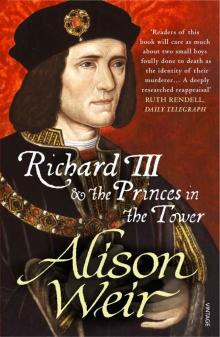 Richard III and the Princes in the Tower
Richard III and the Princes in the Tower Britain's Royal Families: The Complete Genealogy
Britain's Royal Families: The Complete Genealogy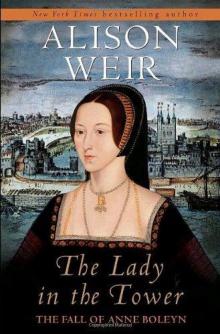 The Lady in the Tower: The Fall of Anne Boleyn
The Lady in the Tower: The Fall of Anne Boleyn Six Wives of Henry VIII
Six Wives of Henry VIII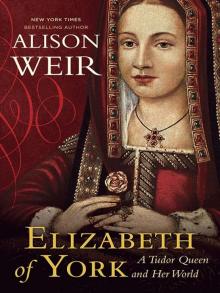 Elizabeth of York: A Tudor Queen and Her World
Elizabeth of York: A Tudor Queen and Her World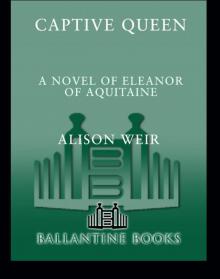 Captive Queen
Captive Queen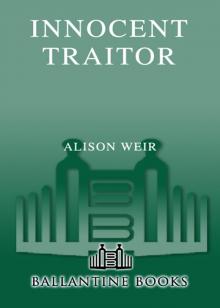 Innocent Traitor
Innocent Traitor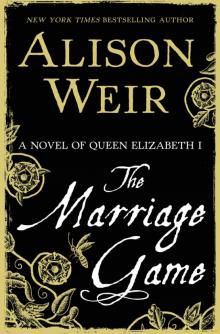 The Marriage Game
The Marriage Game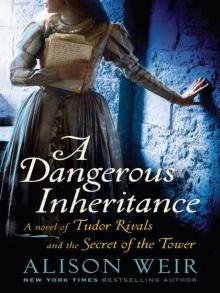 A Dangerous Inheritance
A Dangerous Inheritance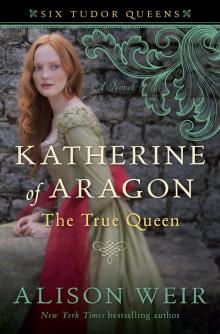 Katherine of Aragón: The True Queen
Katherine of Aragón: The True Queen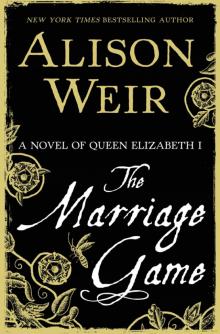 The Marriage Game: A Novel of Queen Elizabeth I
The Marriage Game: A Novel of Queen Elizabeth I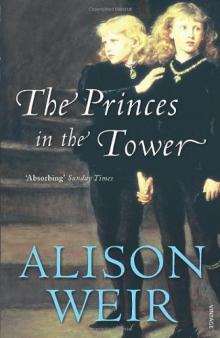 Princes in the Tower
Princes in the Tower Anne Boleyn: A King's Obsession
Anne Boleyn: A King's Obsession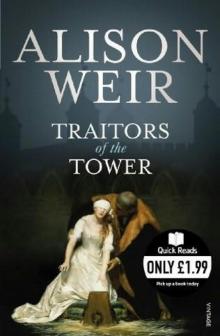 Traitors of the Tower
Traitors of the Tower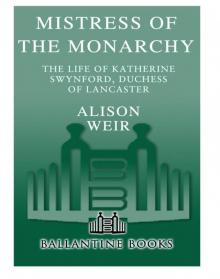 Mistress of the Monarchy: The Life of Katherine Swynford, Duchess of Lancaster
Mistress of the Monarchy: The Life of Katherine Swynford, Duchess of Lancaster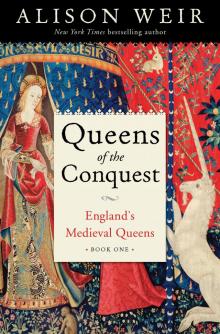 Queens of the Conquest: England’s Medieval Queens
Queens of the Conquest: England’s Medieval Queens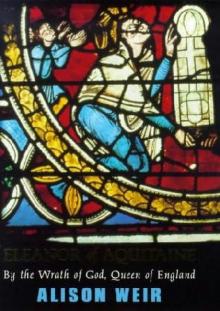 Eleanor of Aquitaine: A Life
Eleanor of Aquitaine: A Life Mary, Queen of Scots, and the Murder of Lord Darnley
Mary, Queen of Scots, and the Murder of Lord Darnley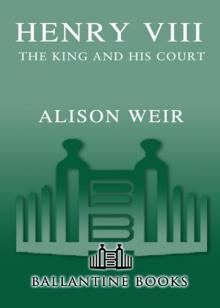 Henry VIII: The King and His Court
Henry VIII: The King and His Court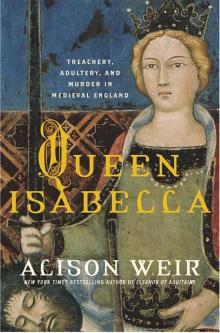 Queen Isabella: Treachery, Adultery, and Murder in Medieval England
Queen Isabella: Treachery, Adultery, and Murder in Medieval England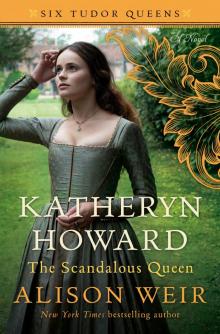 Katheryn Howard, the Scandalous Queen
Katheryn Howard, the Scandalous Queen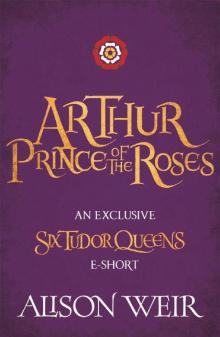 Arthur- Prince of the Roses
Arthur- Prince of the Roses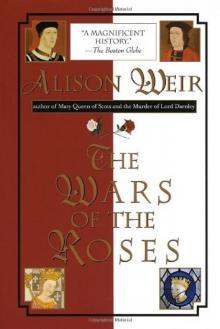 The Wars of the Roses
The Wars of the Roses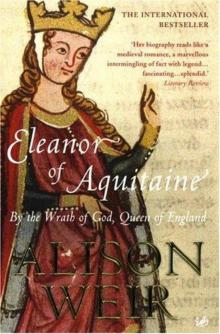 Eleanor of Aquitaine: By the Wrath of God, Queen of England
Eleanor of Aquitaine: By the Wrath of God, Queen of England Mary Boleyn: The Great and Infamous Whore
Mary Boleyn: The Great and Infamous Whore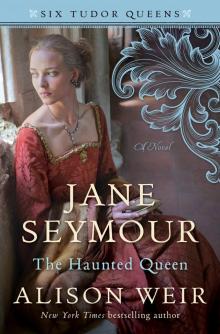 Jane Seymour: The Haunted Queen
Jane Seymour: The Haunted Queen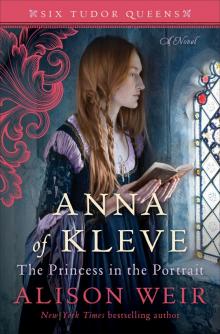 Anna of Kleve, the Princess in the Portrait
Anna of Kleve, the Princess in the Portrait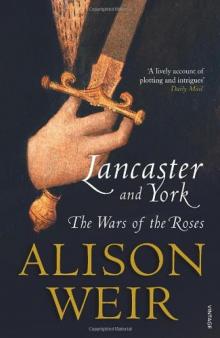 Lancaster and York: The Wars of the Roses
Lancaster and York: The Wars of the Roses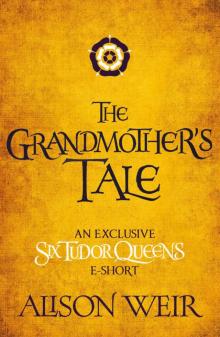 The Grandmother's Tale
The Grandmother's Tale The Princess of Scotland (Six Tudor Queens #5.5)
The Princess of Scotland (Six Tudor Queens #5.5)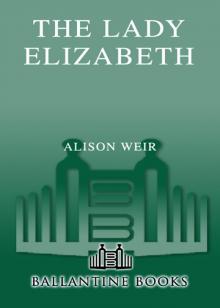 The Lady Elizabeth
The Lady Elizabeth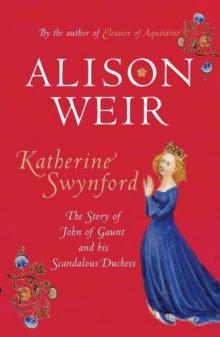 Katherine Swynford: The Story of John of Gaunt and His Scandalous Duchess
Katherine Swynford: The Story of John of Gaunt and His Scandalous Duchess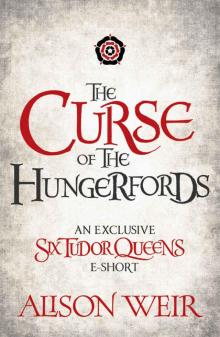 The Curse of the Hungerfords
The Curse of the Hungerfords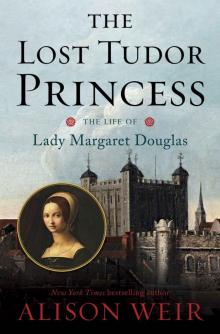 The Lost Tudor Princess: The Life of Lady Margaret Douglas
The Lost Tudor Princess: The Life of Lady Margaret Douglas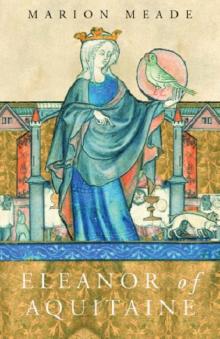 Eleanor of Aquitaine
Eleanor of Aquitaine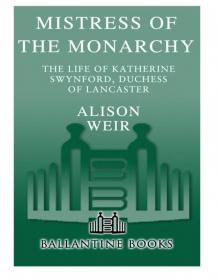 Mistress of the Monarchy
Mistress of the Monarchy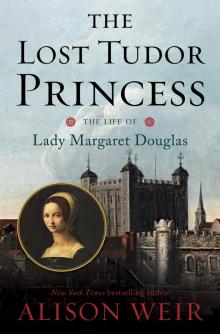 The Lost Tudor Princess
The Lost Tudor Princess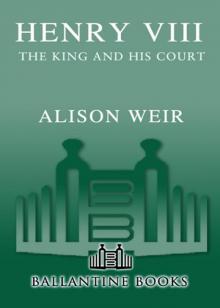 Henry VIII
Henry VIII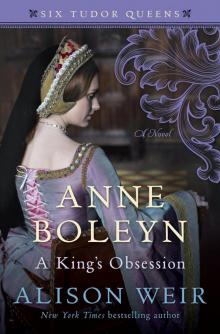 Anne Boleyn, a King's Obsession
Anne Boleyn, a King's Obsession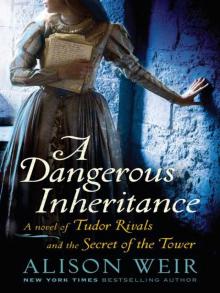 A Dangerous Inheritance: A Novel of Tudor Rivals and the Secret of the Tower
A Dangerous Inheritance: A Novel of Tudor Rivals and the Secret of the Tower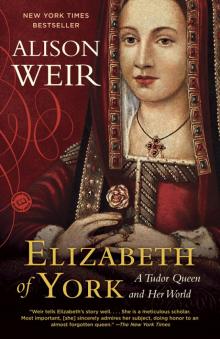 Elizabeth of York
Elizabeth of York Katherine of Aragon, the True Queen
Katherine of Aragon, the True Queen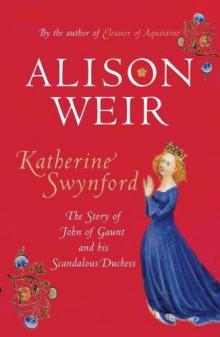 Katherine Swynford
Katherine Swynford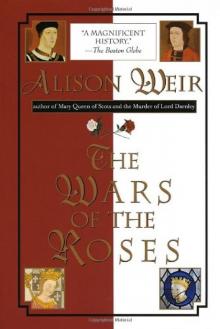 Wars of the Roses
Wars of the Roses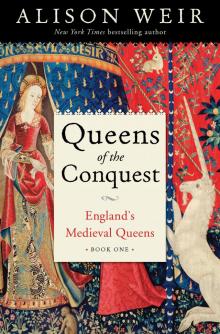 Queens of the Conquest
Queens of the Conquest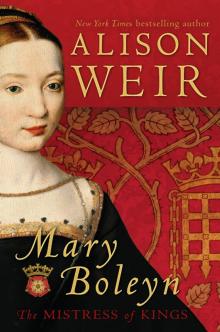 Mary Boleyn
Mary Boleyn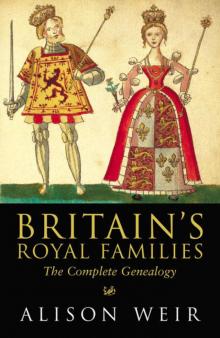 Britain's Royal Families
Britain's Royal Families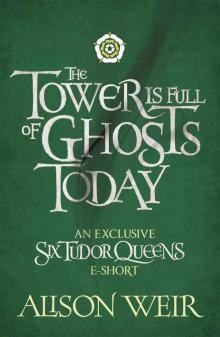 The Tower Is Full of Ghosts Today
The Tower Is Full of Ghosts Today Life of Elizabeth I
Life of Elizabeth I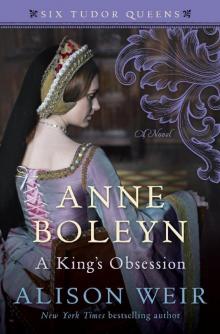 Anne Boleyn A King's Obssession
Anne Boleyn A King's Obssession Lancaster and York
Lancaster and York Jane Seymour, the Haunted Queen
Jane Seymour, the Haunted Queen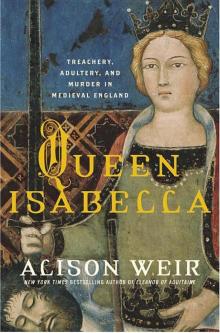 Queen Isabella
Queen Isabella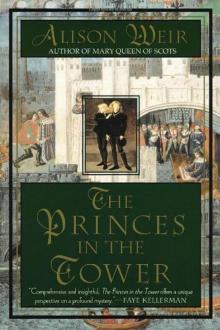 The princes in the tower
The princes in the tower